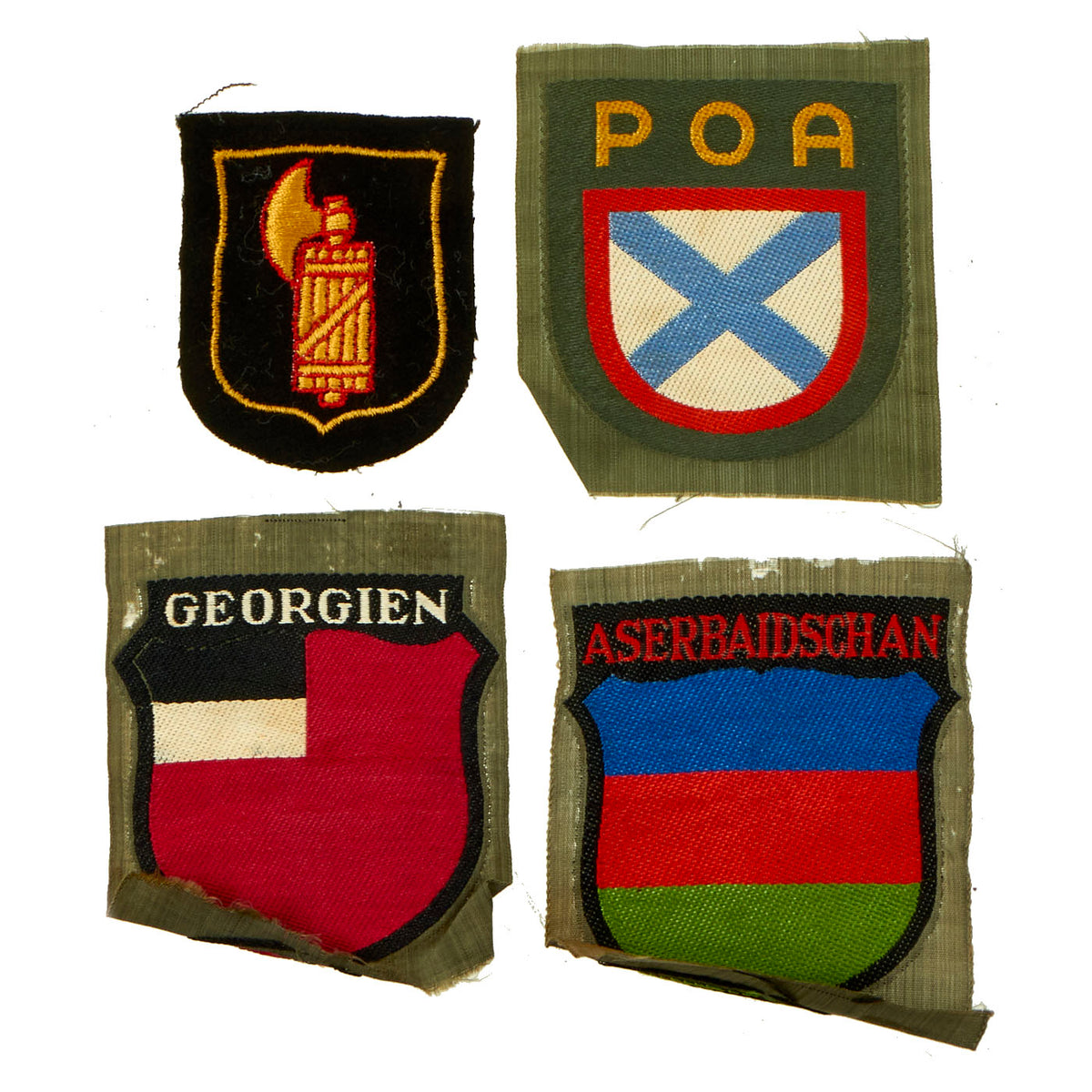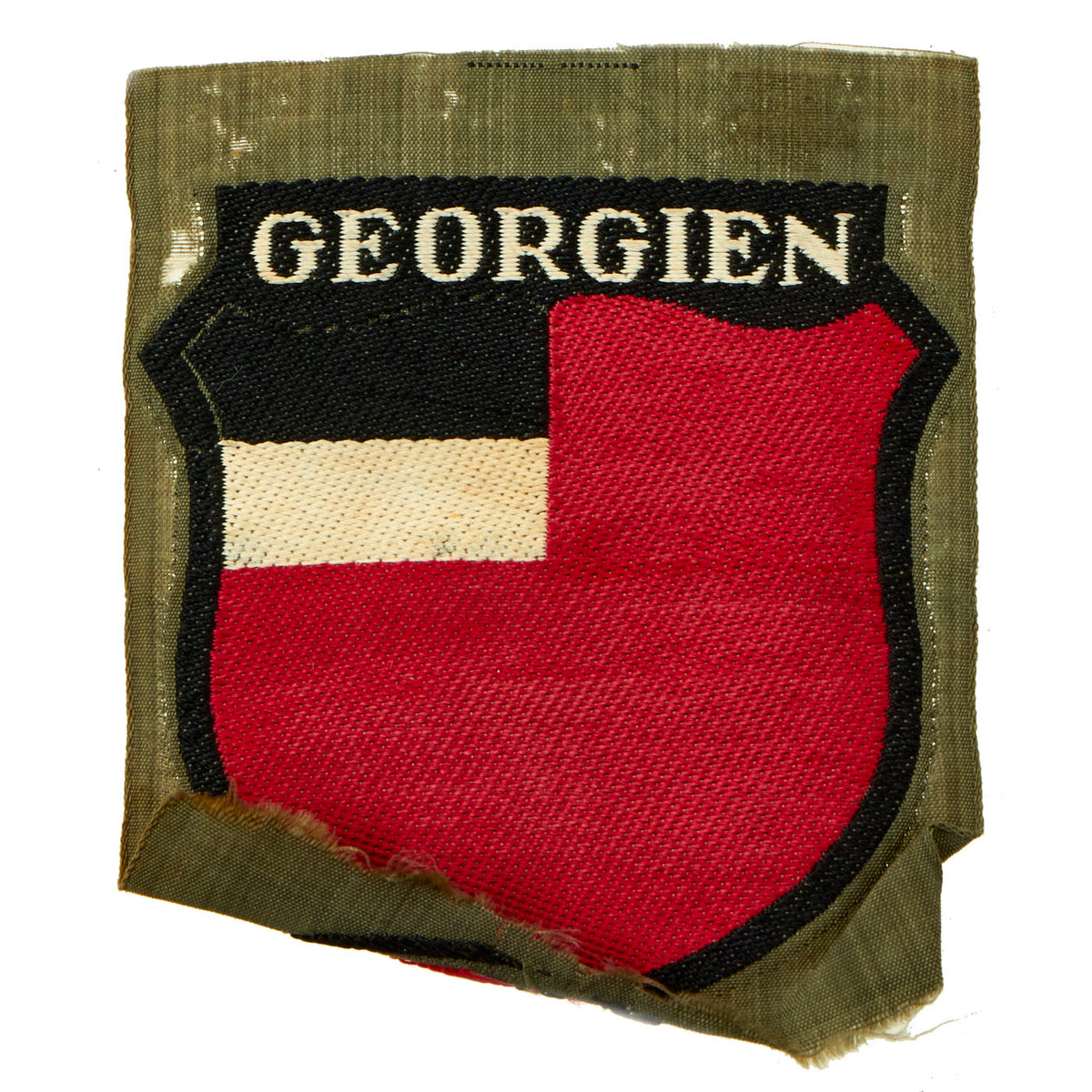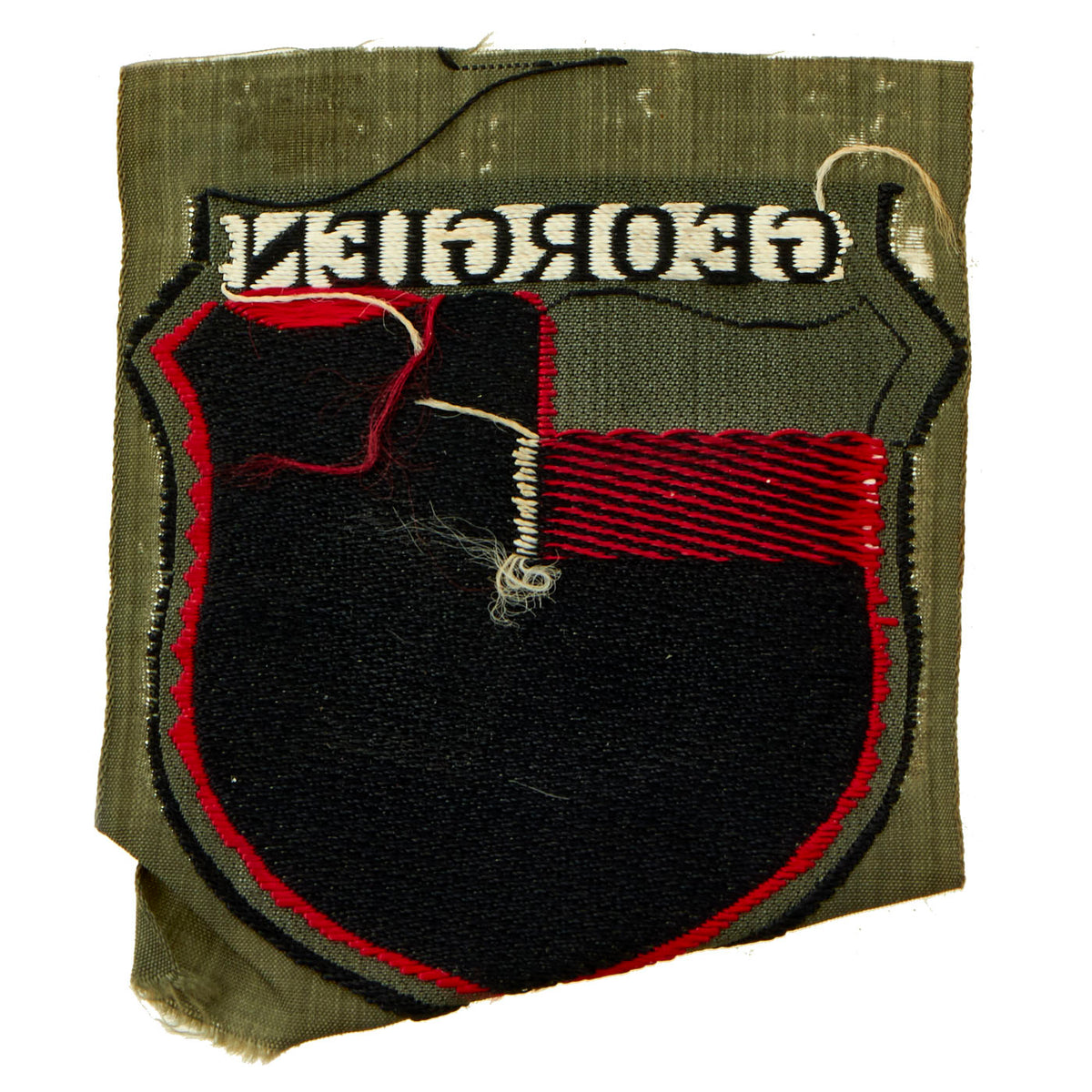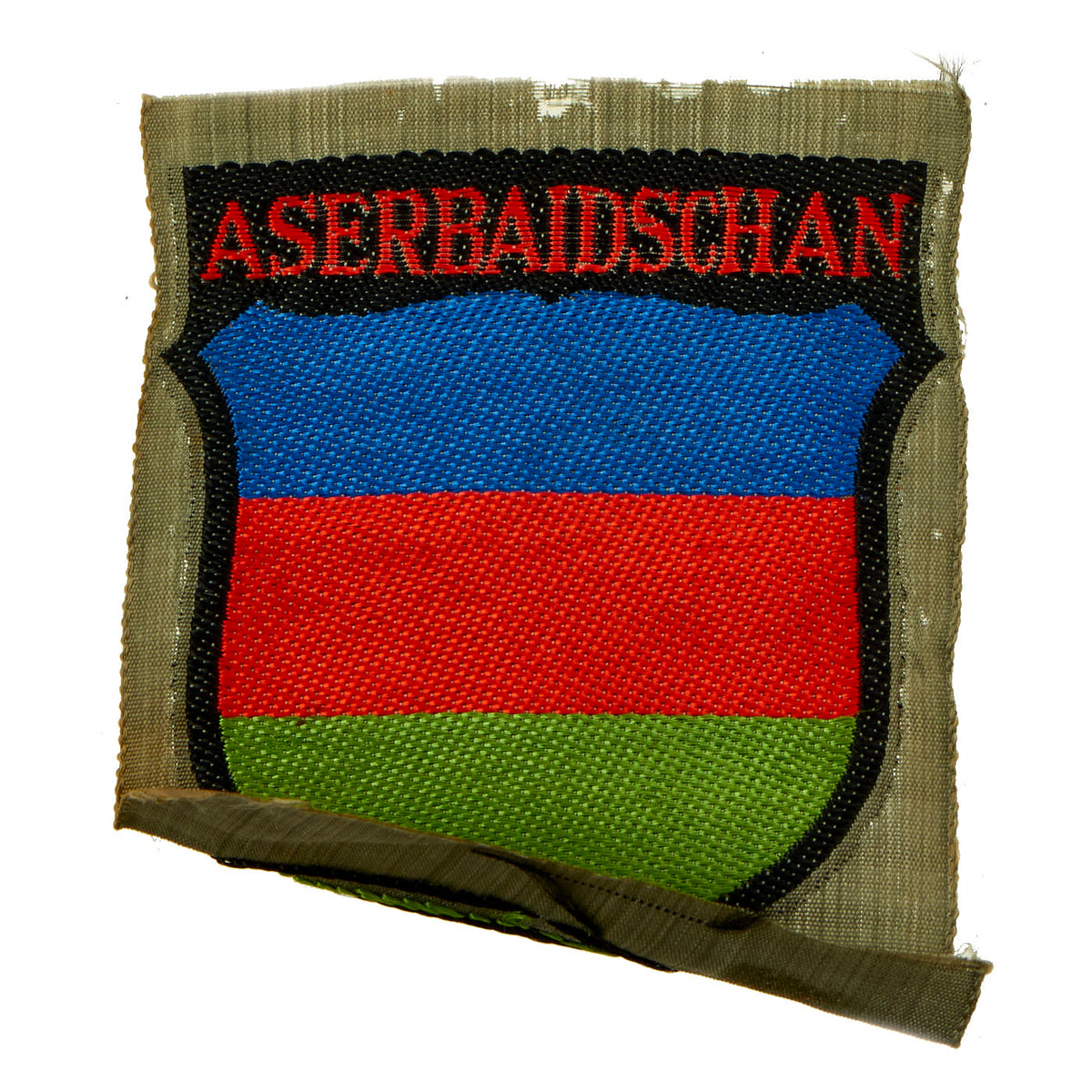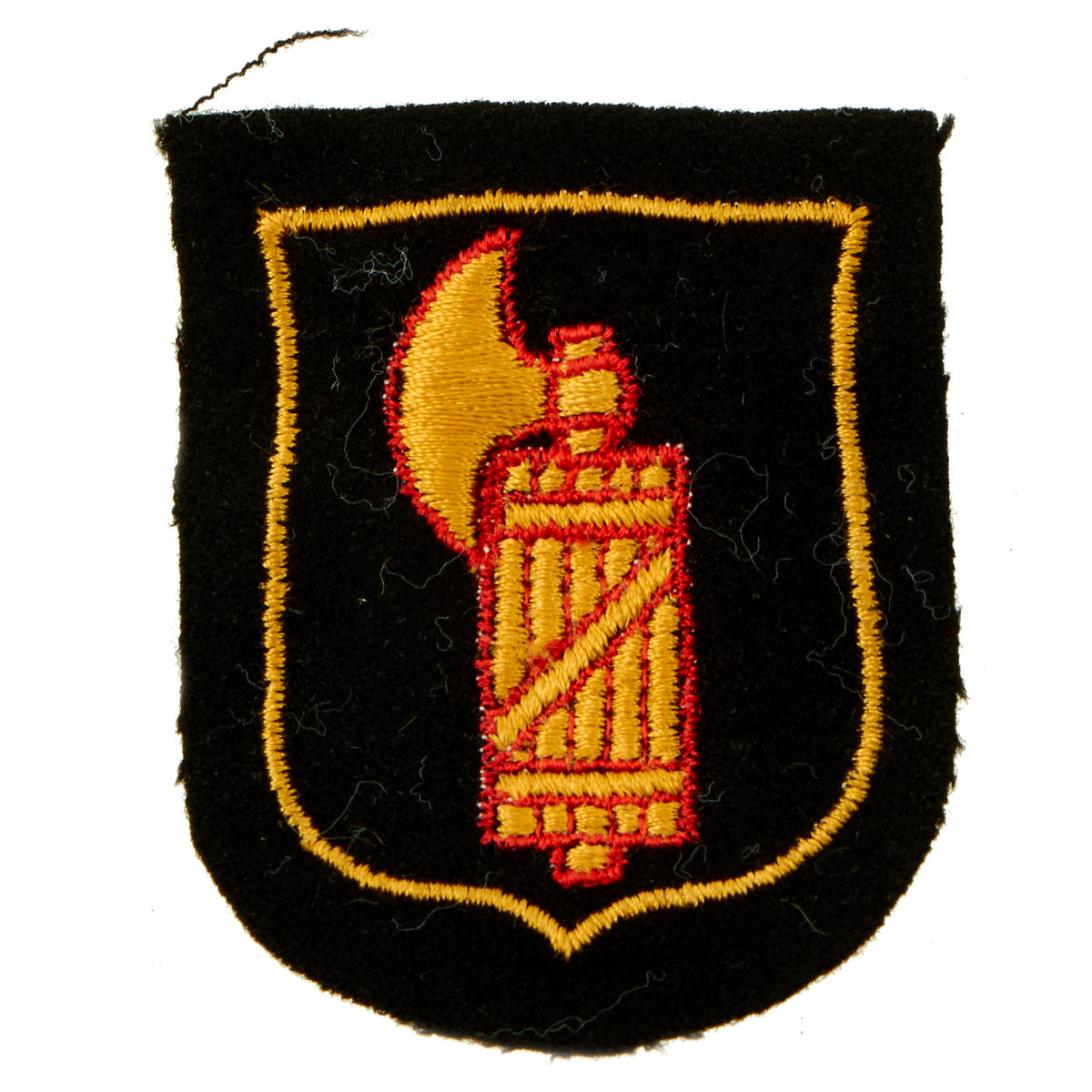Original German WWII Foreign Volunteers Ostlegionen Sleeve Insignia Lot featuring POA, Azerbaijan, Georgian and Italian Waffen-SS Volunteer Patch – 4 Items Original Items
$ 250,00 $ 100,00
Original Items Only One Lot of 4 Available. Ostlegionen (“eastern legions”), Ost-Bataillone (“eastern battalions”), Osttruppen (“eastern troops”), and Osteinheiten (“eastern units”) were units in the Army of NSDAP Germany during World War II made up of personnel from the Soviet Union. They were a large part of the Wehrmacht foreign volunteers and conscripts.
Ost-Bataillone wore German uniforms and equipment and were integrated into larger German formations. They began as the private initiatives of individual military commanders. Most were utilized on the Eastern Front and in the Balkans.
In 1944, a number of Ost-Bataillone were stationed in northern France, in anticipation of an Allied invasion of Western Europe. Units that fought in Normandy against Allied Operation Overlord were part of the German 243rd and 709th Static Infantry Divisions, positioned in the vicinity of the Utah, Juno and Sword invasion beaches. Ost-Bataillone were also present in southern France, during the Allied landings codenamed Operation Dragoon (August 1944).
The items in this lot:
– Russo Liberation Army (ROA “POA”): The Russo Liberation Army (ROA/POA), also known as the Vlasov army after its commander Andrey Vlasov, was a collaborationist formation, primarily composed of Soviets, that fought under German command during World War II.
Vlasov, a Soviet general, agreed to collaborate with NSDAP Germany after having been captured on the Eastern Front. The soldiers under his command were mostly former Soviet prisoners of war but also included White Russo émigrés, some of whom were veterans of the anti-communist White Army from the Russo Civil War (1917–23). On 14 November 1944, it was officially renamed the Armed Forces of the Committee for the Liberation of the Peoples of Russo, with the KONR being formed as a political body to which the army pledged loyalty. On 28 January 1945, it was officially declared that the Russian divisions no longer form part of the German Army, but would directly be under the command of KONR.
In May 1945, members of the ROA switched sides and joined the anti-NSDAP Prague uprising. This shield sleeve patch measures 3 ½” x 3 ⅞” and is an uncut and unissued example.
– Georgian Legion: This is a lovely uncut original example that features the insignia of the Georgian Legion, the flag of the First Georgian Republic. The Georgian Legion was a military formation of NSDAP Germany during World War II, composed of ethnic Georgians. It was formed by Georgian émigrés and prisoners of war, and its declared aim was the eventual restoration of Georgia’s independence from the Soviet Union under NSDAP Party’s doctrine and supervision. Some components of the Georgian Legion fell under the operational control of Waffen SS. Patch Measures 3” x 2 ½”.
– 1st Pattern Azerbaijani Legion: This is the 1st pattern worn which was utilized from 1942 to 1942. This is an uncut and unissued example. The Azerbaijani (Aserbaidschanische) Legion was one of the foreign units of the Wehrmacht. It was formed in December 1941 on the Eastern Front as the Kaukasische-Mohammedanische Legion and was redesignated 1942 into two separate legions, the North Caucasian legion and the Azerbaijani legion. It was made up mainly of former Azerbaijani POW volunteers but also volunteers from other peoples in the area. It was part of the Ostlegionen. It was used to form the 162nd (Turkistan) Infanterie-Division of the Wehrmacht in 1943. Many Azerbaijanis joined here in hopes of liberating their homeland from Soviet rule.
– Italienische Freiwilligen Legion Waffen-SS Foreign Volunteer Service: A sleeve shield constructed of black wool in a shield shaped base, with golden-yellow embroidery outlining the shield as well as the details of the fasces, bordered in red threads.
During World War II, the Waffen-SS recruited significant numbers of non-Germans, both as volunteers and conscripts. In total some 500,000 non-Germans and ethnic Germans from outside Germany, mostly from German-occupied Europe, were recruited between 1940 and 1945. The units were under the control of the SS Führungshauptamt (SS Command Main Office) beneath Reichsführer-SS Heinrich Himmler. Upon mobilization, the units’ tactical control was given to the Oberkommando der Wehrmacht (High Command of the Armed Forces).
All examples come more than ready for further research and display.
Fast Shipping with Professional Packaging
Thanks to our longstanding association with UPS FedEx DHL, and other major international carriers, we are able to provide a range of shipping options. Our warehouse staff is expertly trained and will wrap your products according to our exact and precise specifications. Prior to shipping, your goods will be thoroughly examined and securely secured. We ship to thousands clients each day across multiple countries. This shows how we're dedicated to be the largest retailer on the internet. Warehouses and distribution centres can be located throughout Europe as well as the USA.
Note: Orders with more than one item will be assigned a processing date depending on the item.
Before shipping before shipping, we'll conduct a thorough inspection of the items you have ordered. Today, the majority of orders will be delivered within 48 hours. The delivery time will be between 3-7 days.
Returns
The stock is dynamic and we cannot completely manage it because multiple stakeholders are involved, including our factory and warehouse. So the actual stock may alter at any time. It's possible that you may not receive your order once the order has been made.
Our policy is valid for a period of 30 days. If you don't receive the product within 30 days, we are not able to issue a refund or an exchange.
You can only return an item if it is unused and in the same state as the day you received it. You must have the item in its original packaging.
Related products
Uncategorized
Uncategorized
Uncategorized
Uncategorized
Armored Burgonet Helmet & Polearm from Scottish Castle Leith Hall Circa 1700 Original Items
Uncategorized
Band of Brothers ORIGINAL GERMAN WWII Le. F.H. 18 10.5cm ARTILLERY PIECE Original Items
Uncategorized
Uncategorized
Uncategorized
Uncategorized
Uncategorized
Uncategorized
Uncategorized
Uncategorized
Uncategorized
Australian WWII Owen MK1 Machine Carbine SMG Custom Fabricated Replica with Sling Original Items
Uncategorized
Angolan Rebel 1970s era 60mm Inert Display Mortar from Angolan Civil War Original Items
Uncategorized
Uncategorized
Uncategorized
Uncategorized
